Lexar Professional 2000x 128GB SDXC UHS-II/U3 Review
Lexar Professional 128GB UHS-II Performance Test and Conclusion
To test the Lexar Professional 2000x 128GB SDXC UHS-II/U3 we started with a write test from a Canon EOS 6D Full Frame DSLR. This camera came out two years ago before UHS-II was availab le and like most current DSLR’s only supports UHS-I. The 6D can shoot up to 4.5 frames per second (FPS) at 20.2 megapixels using a DIGIC 5+ processor to get them on the SD card as fast as possible. When shooting JPEG, the processor is fast enough to fire off 4.5 FPS until the card is full; however, when shooting RAW the buffer fills up after a few seconds and then the camera drops to about 2 FPS.
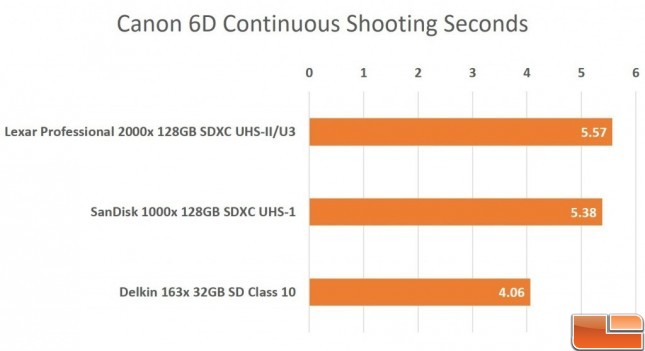
Burst Duration: Using a stopwatch, we timed how long the 6D could shoot in burst mode before the buffers filled. Not surprisingly our old 163x speed Class 10 card dropped out at 4.06 seconds or 18 images. The newer SandDisk UHS-I card and the Lexmark Professional 128GB UHS-II cards were almost identical with times of 5.38 seconds and 5.57 seconds or 24 vs. 25 images captured. Clearly the bottleneck is the cameras UHS-I slot and not the cards. Currently there are only a few cameras that support UHS-II and the newest ones, like the Canon 1dX Mark II, are going down the CFast 2.0 path. Time will tell if 2016 will see many new cameras going SD UHS-II or the more expensive CFast 2.0 for their storage options.
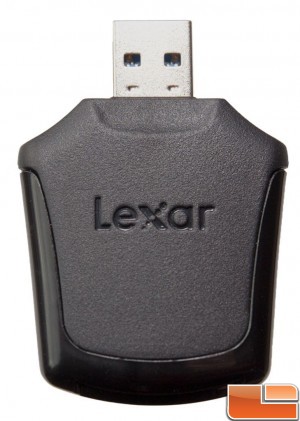
Lexar Professional 2000x 128GB SDXC UHS-II/U3
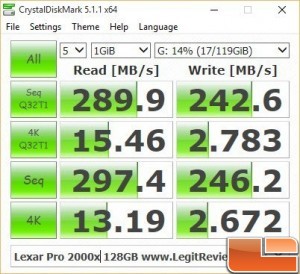
File Transfer: Now that our card is loaded up, lets see how the Lexar Professional 2000x 128GB SDXC UHS-II/U3 works with the included reader in Crystal Disk Mark v5.11 x64. UHS-II has a maximum theoretical speed of 312MB/s and the Lexar card / reader combo is clearly using most of it with 297.4MB/s. Writes are a little slower at 246.2 MB/s, but that is nothing but stellar performance for a SD card.
SanDisk Extreme Pro 1000x 128GB UHS-I
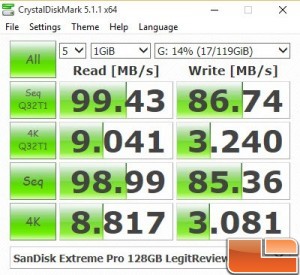
For comparison, we used the Lexar USB 3.0 reader with our daily use SD card to see how much a difference the UHS-II makes over UHS-I. While still impressive, the UHS-I card doesn’t stand a chance against that second row of pins in Lexar’s UHS-II card and gets beat by 3:1.
Delkin 163x 32GB Class 10
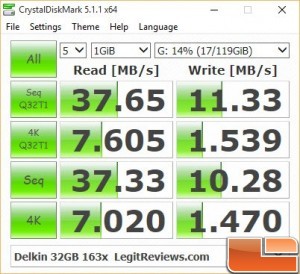
Anyone on a first generation Class 10 card needs to seriously consider the newer technology. Using an old Delkin 163x Class 10 card in the Lexar reader showed just how far this technology has come with an 8:1 speed ratio.
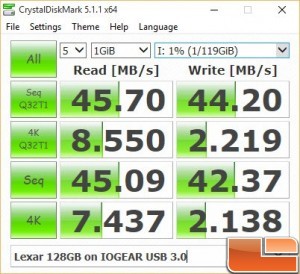
SD Readers do Matter: Throwing the high speed Lexar 128GB UHS-II into a cheap USB 3.0 SD reader simply killed the performance. Not only does it not support the second set of pins, but it obviously has some issue with the standard buss not even hitting UHS-I speeds. Good thing Lexar paired a wicked fast card with a wicked fast reader!
Lexar Professional 2000x 128GB SDXC UHS-II/U3
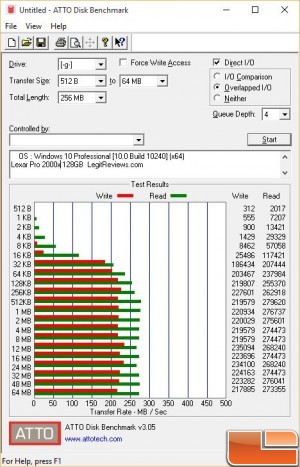
SanDisk Extreme Pro 1000x 128GB UHS-I
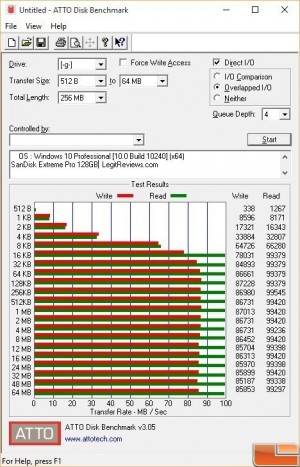
ATTO Benchmark: ATTO v3.05 Shows the similar results as Crystal, the Lexar 128GB UHS-II card hitting almost 280MB/s read and 235MB/s write vs UHS-I 99 / 87 MB/s read and write.
